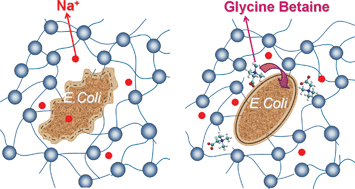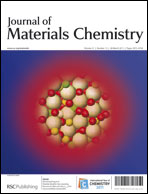The development of sol–gel based processes for the encapsulation of living cells is a challenging task where the host material must be optimized both in terms of intrinsic properties and impact on cell viability. Here, the mechanical stability of silica hosts obtained via a mixed aqueous route based on sodium silicate–silica nanoparticle mixtures could be improved by increasing the relative content of molecular precursors over colloidal silica. The specific surface area, pore volume and diffusion properties of the host were also modified. Moreover, this resulted in an increase in the ionic strength, inducing high osmolarity that is detrimental to encapsulated Escherichia coli bacteria. Glycine betaine, a well-known E. coli osmoprotector, could be successfully used as an additive to the sol–gel formulation to limit this osmotic stress. Compared to the previously studied glycerol additive, glycine betaine was found more efficient to preserve the bacterial viability. Moreover, this efficiency was obtained with much lower amounts of glycine betaine, whose addition has therefore no detrimental impact on the silica host structure. These data provide new information about the different cellular stresses resulting from the sol–gel encapsulation process and demonstrate the importance of combining chemical and biological approaches to design more robust functional “living” materials.

You have access to this article
 Please wait while we load your content...
Something went wrong. Try again?
Please wait while we load your content...
Something went wrong. Try again?


 Please wait while we load your content...
Please wait while we load your content...